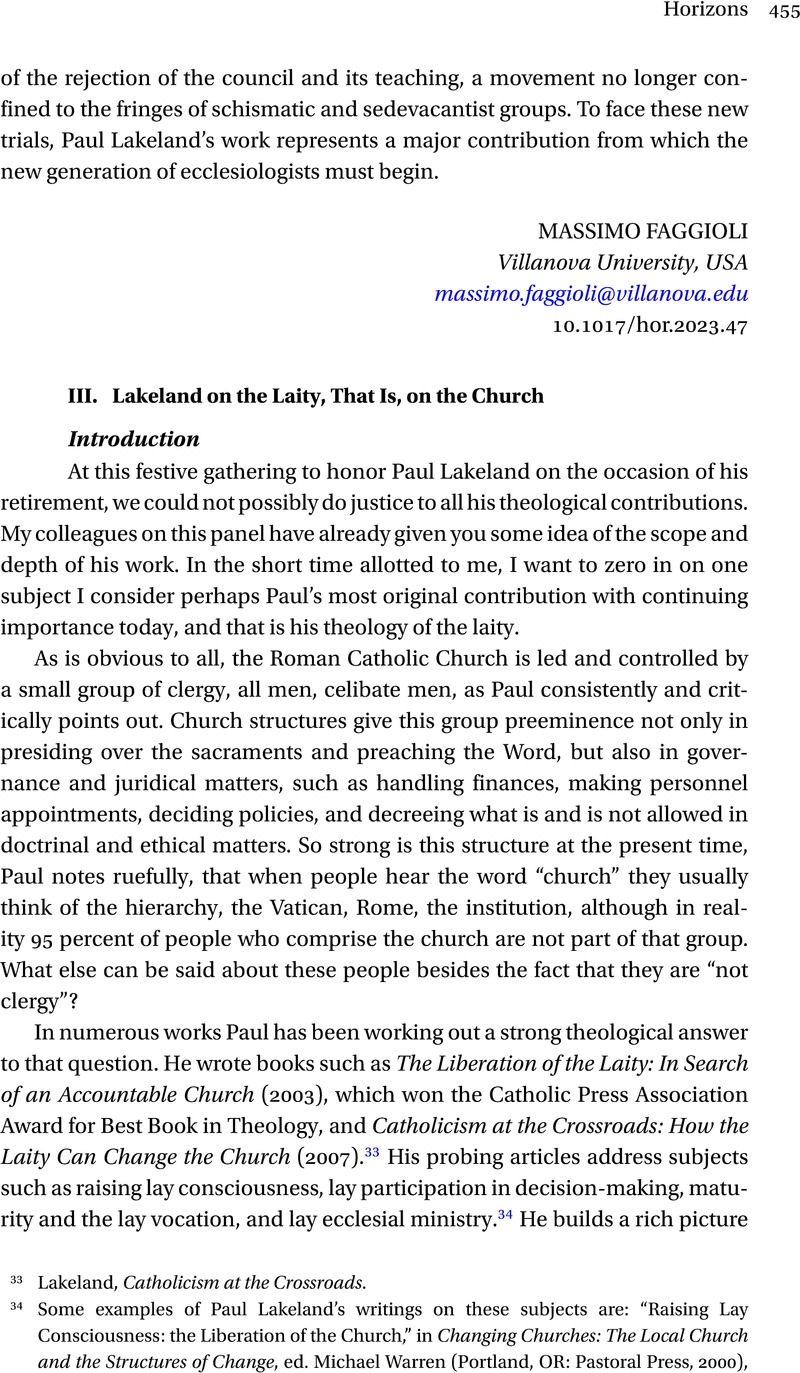No CrossRef data available.
Published online by Cambridge University Press: 08 March 2024

33 Lakeland, Catholicism at the Crossroads.
34 Some examples of Paul Lakeland’s writings on these subjects are: “Raising Lay Consciousness: the Liberation of the Church,” in Changing Churches: The Local Church and the Structures of Change, ed. Warren, Michael (Portland, OR: Pastoral Press, 2000), Google Scholar; “Potential Receptive Learning Within Catholicism: Lay Participation in Decision-Making,” in Ecumenism and the Call to Catholic Learning: Exploring a Way for Contemporary Ecumenism, ed. Murray, Paul D. (Oxford: Oxford University Press, 2008): CrossRefGoogle Scholar; “Maturity and the Lay Vocation: From Ecclesiology to Ecclesiality,” in Catholic Identity and the Laity, College Theology Society Annual vol. 54, ed. Muldoon, Tim (Maryknoll, NY: Orbis Books, 2009): Google Scholar; and “The Lay Ecclesial Minister: Is S/he a Theological Monster?” Concilium 40, no. 6/1(2010): 55–63Google Scholar.
35 Lakeland, Paul, “The Laity,” in From Trent to Vatican II: Historical and Theological Investigations, ed. Bulman, Raymond F. and Parrella, Frederick J. (New York: Oxford University Press, 2006): 193–208CrossRefGoogle Scholar; “The Laity” in The Routledge Companion to the Christian Church, ed. Mannion, Gerard and Mudge, Lewis S. (New York: Routledge, 2008): Google Scholar; and Church.
36 Lakeland, Paul, “Theology of the Laity Is an Ecclesiology,” The Ecumenist: A Journal of Theology, Culture and Society 41, no. 1 (2005): 1–6Google Scholar.
37 Lakeland, Paul, “Crisis and Engagement: The Role of the Servant Theologian,” Proceedings of the Catholic Theological Society of America 74 (2019): 71–81Google Scholar, at 77.
38 Pope Paul VI, Lumen Gentium (November 21, 1964), §40, https://www.vatican.va/archive/hist_councils/ii_vatican_council/documents/vat-ii_const_19641121_lumen-gentium_en.html.
39 Lumen Gentium, §36.
40 Lumen Gentium, §34.
41 Lakeland, The Liberation of the Laity, 90.
42 Lakeland, The Liberation of the Laity, 90.